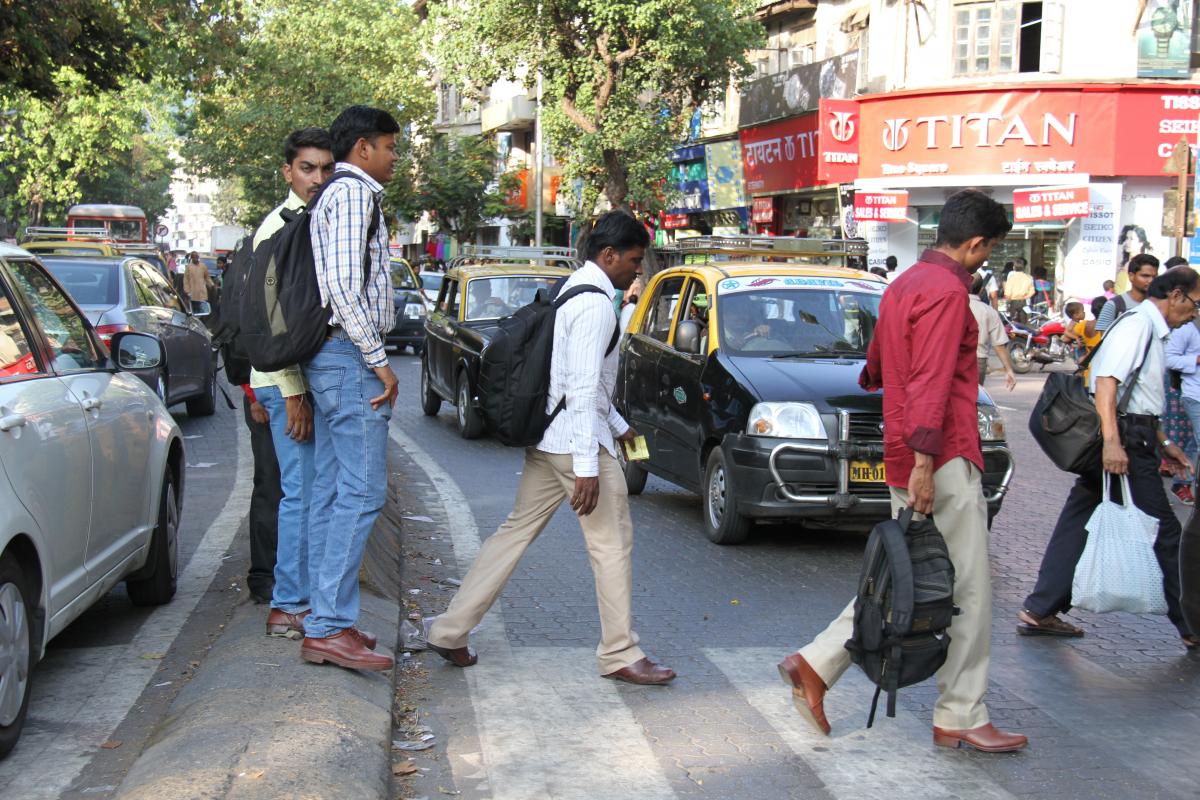#ThinkSafety with WRI India: A Global Conversation about Road Safety
 India has a relatively low level of motorization as compared to developed countries, and yet accounts for 10 percent of the global road traffic crash fatalities (Photo Credit: Neha Mungekar/WRI India)
India has a relatively low level of motorization as compared to developed countries, and yet accounts for 10 percent of the global road traffic crash fatalities (Photo Credit: Neha Mungekar/WRI India)
On 20 May 2015, over 50 participants — including road safety experts, urban planners, research think thanks and media houses from India, USA, Colombia, Mexico, UK, Brazil, Belgium, Canada and Namibia —engaged in a global conversation about Road Safety on Twitter following the Third UN Road Safety Week (May 4 – 10). The hashtag #ThinkSafety was used for over 700 tweets and had a potential reach of 1.9 million.
WRI India posted 6 questions in a span of 60 minutes. These questions were based on road design, challenges of road safety, motorcycle safety, policy changes, and international best practices. Here are some of the top tweets, quotes, and comments that came from the participants during the tweetchat.
Q1: What policy changes would you like to see to make India's roads safer?
Design streets so that there are more people using it,especially women. Research has shown that well used streets are safer.l.#ThinkSafety
— Kalpana Viswanath (@SafetipinApp) May 20, 2015@EMBARQIndia Lower speed limits that are effectively enforced for all, including those with political/economic influence. #ThinkSafety
— Robin King (@RKinBangalore) May 20, 2015Design of roads should match the desired speed of the road, at safe levels for pedestrians #ThinkSafety
— Ben Welle (@Benj_WDC) May 20, 2015@EMBARQIndia A1—One way to reduce fatalities would be 2 ensure easy access 2 medical aid after accidents #ThinkSafety http://t.co/NFKH7SfUfJ
— IndiaSpend (@IndiaSpend) May 20, 2015Q2: What is the most crucial aspect of vehicle safety, with respect to all road users, both inside and outside the vehicle?
Safety assessments should be carried out systematically & routinely for the entire road network, not just certain projects #ThinkSafety
— Divya Kottadiel (@dkottadiel) May 20, 2015A2: Shockingly, in #India, there is no vehicle regulation for safer vehicles. Check this fact by @WHO on #thinkSafety pic.twitter.com/vCnGxN8565
— Urban Voices.in (@urbanvoicesin) May 20, 2015@EMBARQIndia #speed is a fundamental factor. Adopt the 30-30 approach. No road wider than 30m and speed greater than 30 km/hr #ThinkSafety
— Amit Bhatt (@amitbhatt4u) May 20, 2015A2 A great example from the EU of how satellites contribute to saving lives #eCall #thinksafety #innovation @EMBARQIndia
— Intl'RoadTranspUnion (@The_IRU) May 20, 2015**Q3: What role does road design play in safety? **
@EMBARQIndia Absence of safety in design is costing Indians heavily. Pedestrians are hardest hit, followed by bicycle users #ThinkSafety
— India Transit (@straphanger_in) May 20, 2015A3. Good road design reduces chances of crash / fatality when driver makes an error. Safe Systems Approach. #Thinksafety
— Anirban Ghosh (@Anirban007) May 20, 2015Environment/enforcement/education design is a third of the #RoadSafety equation #ThinkSafety
— Shane O'Connor (@oconnorshane) May 20, 2015#ThinkSafety A3. Adequate space for all road users; designing for pedestrians to ensure safety for all @EMBARQIndia @EqualStreets
— Priyanka Vasudevan (@vunderthetree) May 20, 2015@EMBARQIndia India’s GDP is 23 lac crores. Economic value of fatalities 70K Crs, that’s 3% of GDP. We are desiging to kill #ThinkSafety
— Amit Bhatt (@amitbhatt4u) May 20, 2015Q4: What are the key issues for motorcycle safety?
A4 14 years olds must not be racing on motorcycles on the streets. Better law enforcement is much needed! #ThinkSafety
— Zainab Kakal (@zainabkakal) May 20, 2015#ThinkSafety A4. Helmets, helmets & helmets...and also control speed. Did I say helmets?
— Binoy Mascarenhas (@binoymas) May 20, 2015@EMBARQIndia Correct road geometry - turning raddi, gradients can play a crucial role in minimizing two wheeler accidents #ThinkSafety
— Nikhil Chaudhary (@Nikhil_Ciao) May 20, 2015@EMBARQIndia Better quality construction. Clear signage. Reliable signalling. Dedicated lanes for buses & cyclists. #ThinkSafety
— Arjun Mohan (@ArjunM1412) May 20, 2015Q5: What is meant by the multi-factor nature of accidents? How does this influence crash investigation?
#ThinkSafety A5: Road design elements are also responsible, only driver can’t be held responsible, Even pedestrian sometimes
— Kaustubh (@kaustubhchuke) May 20, 2015@EMBARQIndia #ThinkSafety
A5: Initial response is to blame drivers/pedestrians, but most times is bad road design, lack of safe crossings
— Dario Hidalgo (@dhidalgo65) May 20, 2015#Thinksafety A5. In the absence of expertise of managing a multi-factor situation all accidents get attributed to driver error!
— Anirban Ghosh (@Anirban007) May 20, 2015Q6: What are some of the safety best practices that have been proven successful internationally?
Sweden’s successful #VisionZero is an uncompromising approach to road safety that puts human life first #ThinkSafety
— Divya Kottadiel (@dkottadiel) May 20, 2015@EMBARQIndia #ThinkSafety
A6: Best road safety record: Singapur
Great public transport, transit oriented development, design, enforcement
— Dario Hidalgo (@dhidalgo65) May 20, 2015Other countries adopting safe system approach: Korea, Ghana, U.S., Denmark, New Zealand and cities such as nyc #ThinkSafety
— Ben Welle (@Benj_WDC) May 20, 2015Check out our prezi with the highlights from the discussion here.